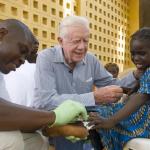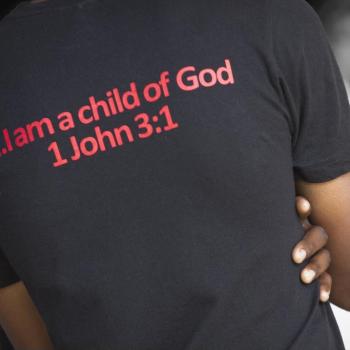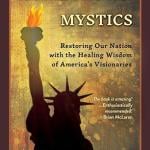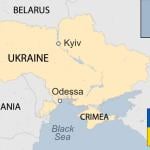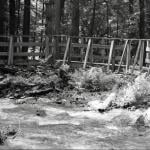…and the extraordinary evangelism of a woman named Agnes and a man named Mitsuo.

The Bible tells us we can move mountains when we have faith the size of a tiny mustard seed. That’s surely an exaggeration — or is it? As we live our Christian lives, remember the mustard seed.
When I think about faith and a mustard seed, I think about the remarkable faith-driven lives of the biblical Ruth and the Apostle Paul, Dr. Martin Luther King, Jr., Pope John Paul II and former president Jimmy Carter, among others.
But I’m not going to talk about any of these people today. I’m going tell you a little bit about the Apostle Paul’s role in spreading the Christian faith. Then, I will tell you about a young woman named Agnes, who was born in Macedonia, and a man named Mitsuo, who was born in Japan. Both entered the world in the early 20th century, and both dedicated their lives to sharing their Christian faith.
You may wonder who Agnes and Mitsuo were and how Christianity changed their lives and the lives of others. We will get to that shortly. For now, let’s begin with Christ’s story of the mustard seed and then get to Paul.
What about Faith and a Mustard Seed?
Few of us begin our journey of faith in the blinding road-to-Damascus experience that the Apostle Paul had. Our faith begins small. For some of us, it grows from a tiny seed into a magnificent faith that changes the world or at least our personal worlds.
Matthew 17:20-21 quotes Christ telling his disciples, “For truly I tell you, if you have faith the size of a mustard seed, you will say to this mountain, ‘Move from here to there,’ and it will move, and nothing will be impossible for you.”
The verses leading up to Matthew 17:20-21 tell of a desperate father who asks Christ’s disciples to drive out the demons that possess his son. As a parent, I can feel the man’s desperation.
The disciples try but fail even though Jesus had earlier authorized them to perform miracles. The father then asks Jesus for help, and the Lord succeeds where his disciples failed.
Afterward, the disciples quietly and privately asked Christ to explain their failure, and Christ responds with the statement about faith and a mustard seed.
Why a Mustard Seed?
Why would Christ use the example of a mustard seed? It’s an ugly, invasive weed that’s almost impossible to eradicate once it takes root. Its seeds are miniscule — about 0.1 inch or 2.5 mm in diameter – but they grow into shrubs that measure up to 30 feet tall and 30 feet in diameter.
The mustard seed analogy reminds me of Christianity in some ways. The faith began as a tiny seed planted by an itinerant preacher 2,000 years ago. From the small area of Galilee and Judea where Jesus lived and preached, it spread across the globe. Today, Christianity is the world’s largest religion with 2.3-2.4 billion followers.
How Did Christianity Take Root?
The Apostle Paul’s faith was nonexistent during the time he was called Saul of Taurus. Saul vigorously and violently prosecuted Christians.
“He made havoc of the church, entering every house and dragging off men and women, committing them to prison,” Acts 8:3 tells us.
Saul’s conversion took place one day as he headed toward Damascus to find and arrest more of Christ’s followers. He was suddenly blinded by a light from heaven and fell to the ground. Then, he heard a voice say, “Saul, Saul, why do you persecute me?” You may read more in Acts 9:1-19.
The experience turned Paul’s beliefs upside down. Gone were the days when he persecuted Christians. Now, he became known as Paul, and his mission was to spread Christianity. He and Christ’s original apostles, along with new followers of Christ, shared the gospel everywhere they went.
Paul’s travels covered the landscape: Corinth, Ephesus, Caesarea, Syria, Thessalonica, Athens and other locations. He planted churches along the way and wrote letters to the churches he started – letters that found their way into our New Testament.
His faith was initially smaller than a mustard seed. It was non-existent. But Paul helped spread the Christian faith much farther than anyone could have imagined. Talk about moving mountains!
Who Was Agnes Bojaxhiu?
Agnes was born Agnes Gonxha Bojaxhiu to Albanian parents in 1910. The Bojaxhiu family lived comfortably, though they were not wealthy. Agnes’s father was a businessman who died when Agnes was eight years old, and her mother was a pious woman who helped shape her daughter’s life.
Agnes’s mother frequently invited destitute people to eat with them, and Agnes asked about the people. Her mother explained that “some of them are our relations but all of them are our people.” Young Agnes took note.
While quite young, she became interested in Christian faith and the charitable works of missionaries in Bengal. Her faith blossomed.
Remember the mustard seed?
How Did Agnes Serve?
At age 12, Agnes decided to dedicate herself to a religious life. While in her late teens, she moved to Ireland with the idea of becoming a nun and missionary.
She spent a year at the Loreta Convent before being sent to India, where she later became principal of a school. Her life there was comfortable, but Christ had a greater but tougher life in mind for her.
Remember the Mustard Seed?
Agnes – who was known as Sister Teresa at the time – saw the poverty and violence around her. She listened to Christ’s call for her to leave her comfortable life behind and help people who were destitute.
It was definitely a leap of faith as the mustard seed of her faith blossomed.
In Calcutta, Agnes found herself surrounded by horrors that are hard to imagine. Rather than wring her hands, she got busy establishing a school and a home for people who were dying.
News of her work spread, and other people became involved, which led her to create a congregation called the Missionaries of Charity. The congregation was small in the beginning.
Remember the mustard seed?
News of the nun’s work spread beyond the local community. Eventually, her work became known worldwide. By the 1960’s, she had opened homes for lepers, as well as orphanages and hospices. By the middle of the decade, she had opened charity houses in various parts of the world including New York.
Helping Both Sides
The Catholic nun was brave as well as faithful. In 1987, she quietly went to war-torn Beirut, Lebanon to help Christian and Muslim children in need. She also set up a home for people infected with HIV/AIDS and established charity houses for unwed mothers.
Agnes, as you have probably guessed, is widely remembered as Mother Teresa. She was recognized for her humanitarian efforts on a global scale and received the 1979 Nobel Peace Prize, the Soviet Union’s Gold Medal of the Soviet Peace Committee and the Jewel of India award.
Mother Teresa died in 1997, and the Catholic Church recognized her as Saint Mother Teresa in 2016. You can read more about Saint Mother Teresa’s life and work by clicking here or here.
Remember the mustard seed?
Who Was Mitsuo Fuchida?
You probably haven’t heard of Mitsuo Fuchida. I hadn’t until recently.
Mitsuo led the first wave of Japanese air attacks on Pearl Harbor on Dec. 7, 1941 – the day that would live in infamy, according to President Franklin Roosevelt.
With more than 2,400 Americans killed and nearly 1,200 wounded, the U.S. reeled from the tragedy. The Japanese celebrated it as a victory.
Who was Mitsuo Fuchida? He was born in Japan in 1902 and joined the Japanese navy at age 19. He quickly rose through ranks and developed an interest in flying. His specialty became horizontal bombing, which played a role in the Pearl Harbor attack.
The promotions continued, and Mitsuo was eventually selected to command the first wave of Japanese fliers over Pearl Harbor. Following the attack, Mitsuo became a hero to the Japanese people.
A war injury eventually sidelined him, and he spent the rest of the war in Japan. When the U.S. dropped an atomic bomb on Hiroshima in 1945, Mitsuo was part of a group sent to assess the damage.
He was the only member of the group to survive the radiation poisoning they sustained in Hiroshima. His military career ended with the war, and he returned to his family’s farm.
“Life had no taste or meaning,” he later said. “I had missed death so many times and for what? What did it all mean?”
What Did Mitsuo Do?
A follower of Shintoism, Mitsuo came to the Christian faith in an unusual way. He was selected to testify at several Japanese war crimes trials following World War II, according to War History Online. The trials related to torture of American prisoners of war.
The idea of testifying angered him. He already resented the U.S. because of its decades-long restrictions on Asian immigration, and he thought the war crimes trials were a sham. He believed that Japanese POWs were treated as inhumanely as American POWs were and decided to find evidence to present at the trials.
He set out to interview a number of former Japanese POWs, but rather than uncovering stories of horrible abuse including torture, he discovered that the Japanese POWs were actually treated well.
Mitsuo was shocked, especially when one former POW told him about an American Christian’s great kindness to the Japanese POWs despite the fact that Japanese soldiers had killed her parents. Mitsuo could not believe what he was hearing.
The warrior code that he espoused would have demanded revenge under such circumstances. Yet, this young woman treated the Japanese POWs with kindness.
Mitsuo began to reassess his beliefs. He wanted to understand this Christian faith he was discovering.
“He soon encountered the testimony of Jacob DeShazer, an American POW who shared his story of finding God in a Japanese (POW) camp in ‘I Was a Prisoner of Japan,'” according to the Christian History Institute. Read more here.
He decided to read the Bible, where he discovered Christ and left his Shinto religion to give his life to the Lord.
The one-time soldier became an evangelist in the 1950s and traveled throughout Europe and the United States sharing the gospel. Initially, he was hesitant about speaking to American groups, but the Americans welcomed him despite his role at Pearl Harbor.
“I would give anything to retract my actions at Pearl Harbor,” he said, “but that is impossible. Instead, I will work at striking the deathblow to the giant called hatred which infests human hearts.”
Mitsuo spent the latter part of his life telling the world about the Christian faith. He died in 1976.
Learn more about his life by clicking here.
The Darker Side
Mother Teresa and Mitsou Fuchida did great things because of their Christian faith, but they had their critics. Some people criticized the quality of medical care and certain financial problems associated with Mother Teresa. Read more here. Critics of Mitsou Fuchida disputed certain statements he made regarding the Pearl Harbor attack. Learn more here.
Yet, both Christians shared their faith in ways that few of us do. And it all began with faith the size of a mustard seed.



